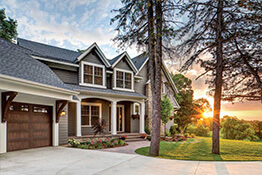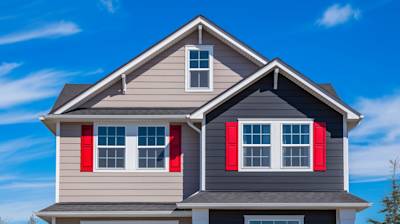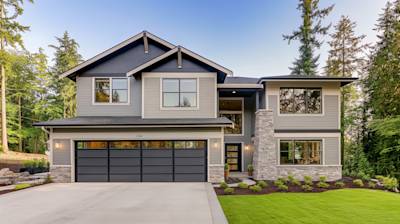If you're in the market for new siding for your home, you might be overwhelmed by the options available - from vinyl to brick to fiber cement. However, one siding option that has been growing in popularity over the years is hardboard siding. Also known as high-density fiberboard, hardboard siding offers an appealing combination of affordability, durability, and design versatility. Given these advantages, it is no surprise that more and more homeowners are choosing this material for their exterior remodeling project.
Understanding Hardboard Siding
Hardboard siding is a type of engineered wood product made from highly compressed wood fibers, resin, and wax. It is designed to mimic the look and texture of wood but with improved durability and resilience to weather and insect damage. The boards can be painted or stained to match any color scheme, providing a customized look for your home's exterior.
Manufacturing Process of Hardboard Siding
The manufacturing process of hardboard sidings is quite unique. Firstly, the logs are debarked and chipped into small pieces. These fragments are then boiled under high pressure to separate the wood fibers. After these fibers have been isolated, they are mixed with resins and waxes to create a durable, hard substance. This mixture is then heat compressed to form the hardboard, which is further cut into siding panels.
The Advantages of Using Hardboard Siding
When it comes to exterior home improvement, hardboard siding has a lot to offer. Following are some of the key benefits:
- Affordability: Compared to wood and fiber-cement siding, hardboard is much more cost-effective without compromising on quality.
- Durability: Hardboard is resistant to damage from rain, snow, wind, and insects, making it an excellent choice for homes in a wide range of climates.
- Design versatility: Hardboard can be painted or stained in any color or finish, offering unlimited design possibilities.
- Eco-friendly: Since it's made from wood waste materials, hardboard siding is a more sustainable choice than many other siding options.
Maintaining Hardboard Siding
Although hardboard siding is relatively low maintenance, there are steps homeowners can take to keep their siding looking its best. Primarily, it should be cleaned annually, inspected for damage or decay, and repainted every 5-7 years.
Tips and Tricks for Cleaning Hardboard Siding
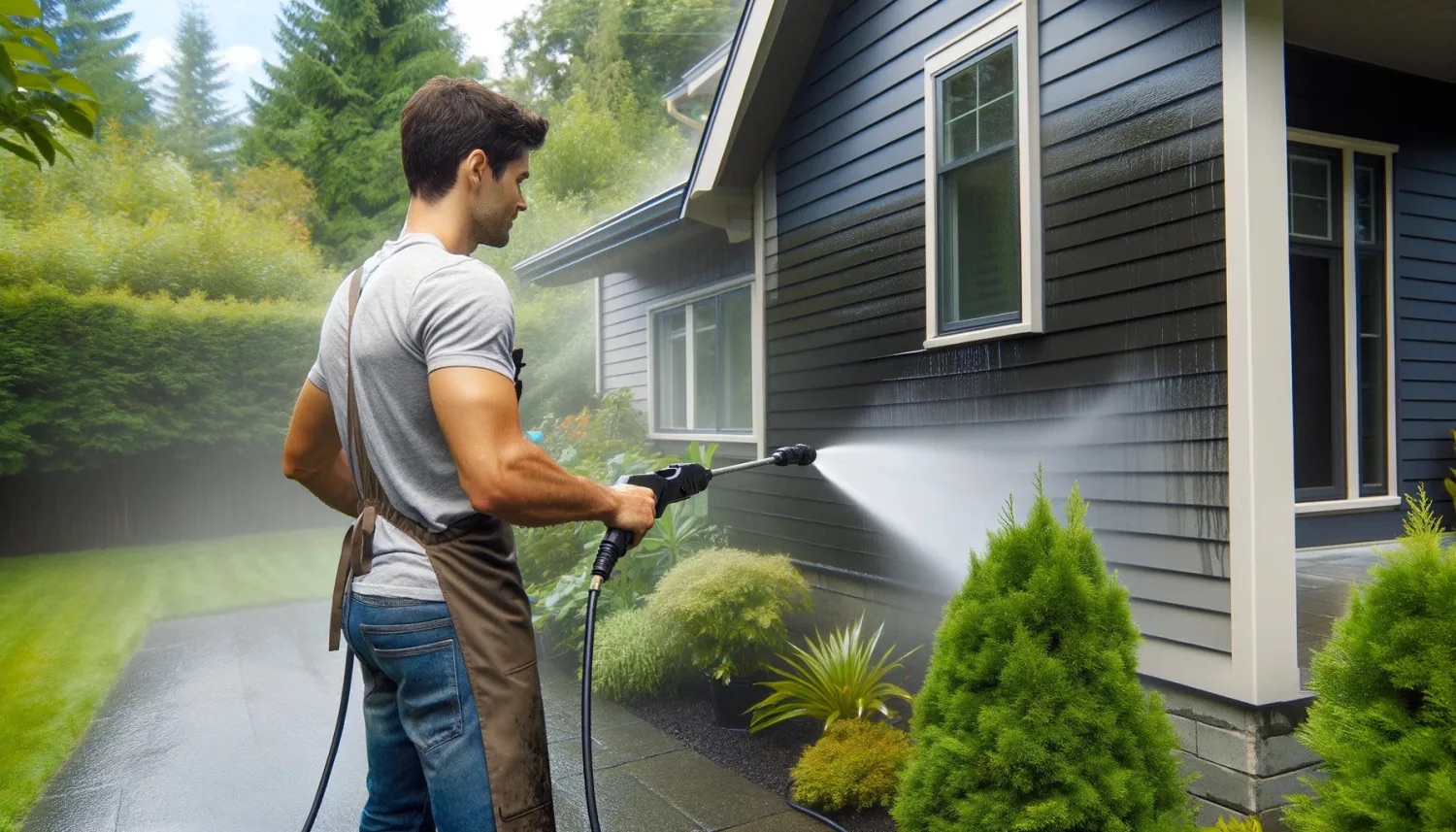
When cleaning hardboard siding, mild soapy water works best. It is important to avoid using harsh or abrasive cleaners as they can damage the surface. Also, pressure washing should be conducted with care to avoid damaging the boards.
Choosing Hardboard Siding Brands
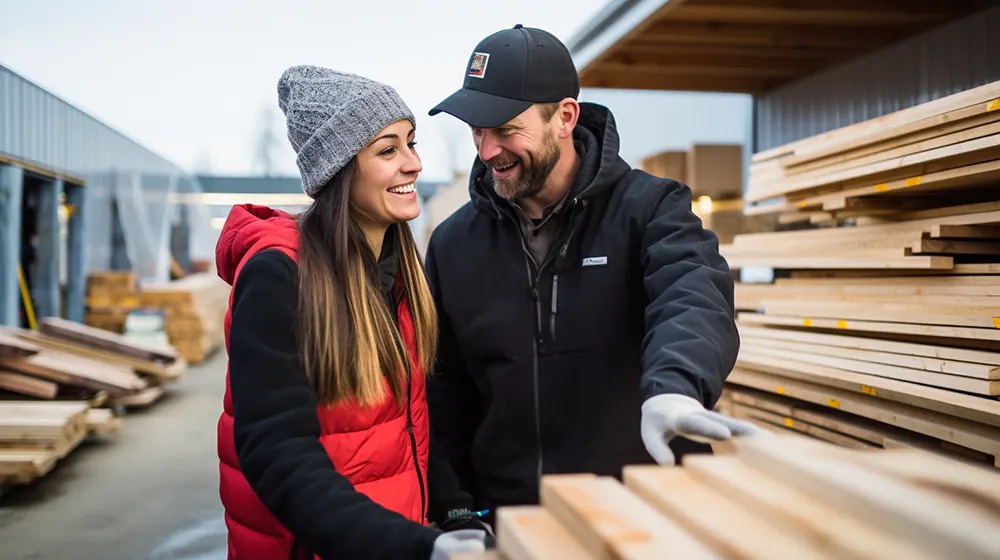
Not all hardboard sidings are manufactured equally. Some well-known brands offering high-quality hardboard sidings include Masonite, LP SmartSide, and James Hardie. These manufacturers are reputed for their superior products, offering warranties and excellent customer service.
Installation of Hardboard Siding
For successful installation, it is essential to follow the manufacturer's instructions and guidelines. Many homeowners prefer hiring professionals to handle the installation. However, with the right tools and a bit of home improvement expertise, it's possible to DIY.
As more people become aware of the benefits offered by hardboard siding, its popularity will continue to grow. With its affordability, durability, and aesthetic versatility, it's an excellent choice for anyone considering a siding replacement or exterior home improvement.
Frequently Asked Questions about Hardboard Siding
Why Choose Hardboard Siding for Your Home?
The choice of hardboard for siding comes packed with benefits. Among these are its durability, affordability, and aesthetic versatility. It mimics the appearance of wood yet does not suffer from the same level of decay or insect damage. Offering excellent insulation and an ability to withstand harsh weather conditions, it’s a popular selection for homeowners seeking long-term value.
How Long Does Hardboard Siding Last?
With proper maintenance and care, hardboard siding can last anywhere between 20 to 40 years. Factors that can affect this lifespan include the quality of the original hardboard product, the accuracy of installation, and the local climate.
How Do You Install Hardboard Siding?
Hardboard siding typically requires a specific set of tools, including a circular saw, a hammer, a level, and a pry bar, among others. Although a DIY approach is possible, many homeowners opt for professional installation to ensure precision and longevity.
What Maintenance Does Hardboard Siding Require?
Hardboard siding requires regular inspection for signs of wear, such as swelling, chipping, or cracking. Despite its resistance to decay, routine cleaning and painting every few years will extend its lifespan and keep it looking fresh.
Can You Paint Hardboard Siding?
Absolutely! Hardboard siding accepts paint well, making it easy for homeowners to customize their home’s appearance or refresh its look over time. The use of high-quality, exterior-grade paint is advised for long-lasting results.
How Does Hardboard Siding Perform in Various Climates?
Hardboard siding is praised for its resilience against harsh climates. Whether you are living in an area prone to heavy rainfall, extreme heat, or freezing temperatures, it maintains its structural integrity and aesthetic appeal. However, in particularly humid areas, additional routine inspections may be necessary to spot any moisture-based damages early on.
Is Hardboard Siding Environmentally Friendly?
Yes, hardboard siding is noted for being an eco-friendly option. It is often made from recycled wood fibers and resin, reducing waste. Moreover, its long lifespan means you won’t need to replace it as frequently, resulting in less material consumption and waste over time.
Does Hardboard Siding Provide Good Insulation?
Definitely. Hardboard siding has excellent insulating properties, helping to maintain a stable and comfortable temperature within your home, which can also result in energy savings.
Is it Possible to Repair Hardboard Siding?
Yes, minor dents, chips or cracks can be usually be repaired using wood filler or hardboard-specific repair products. However, for more significant damage, replacing the affected board may be necessary.
How Does Hardboard Siding Compare to Other Siding Options?
Hardboard siding sits comfortably between vinyl and wood in terms of pricing, although it replicates the aesthetics of wood much better than vinyl. It also offers superior resilience and longevity compared to traditional wood siding, due to its resistance to wilt and insect damage.
Pros and Cons of Hardboard Siding
Pros of Hardboard Siding
Durability
One of the most significant benefits of hardboard siding is its durability. This material is extremely robust and resistant to damage, which can result in longevity and value for the homeowner.
- Resistance to Pests: Hardboard siding is resistant to most pests such as termites, rodents, and bugs. Thus, homeowners do not have to constantly worry about infestation and repeated extermination costs.
- Weather Resistance: Hardboard siding can withstand varying weather conditions, including wind, rain, heat, and cold, which makes it ideal for homes located in different climatic regions.
- Impact Resistance: Hardboard siding can withstand heavy impacts reducing the need for frequent repairs or replacements.
Aesthetic Flexibility
Hardboard siding offers the aesthetic flexibility that other siding materials cannot. It can be painted or finished in different colors and textures, giving homeowners the ability to customize their home's exterior to match their personal taste and style.
- Wide Variety of Options: With hardboard siding, homeowners have a wide variety of design, texture, and color options to choose from.
- Replicates Other Materials: Hardboard siding can be formed to replicate other siding options like wood or stone, providing the aesthetic appeal of these materials without the associated costs or maintenance requirements.
Affordability
Compared to other siding materials such as brick, vinyl, and wood, hardboard siding is generally more affordable, which is an important aspect for most homeowners.
- Lower Installation Costs: Hardboard sidings are easier and less time-consuming to install compared to other sidings, thereby reducing labor costs.
- Reduced Maintenance Costs: With its resistance to damage and wear, hardboard sidings can remain in good condition for many years, reducing the need for frequent repairs or replacements which can save money over time.
Cons of Hardboard Siding
Maintenance
Despite its durability, hardboard siding does require some maintenance to keep its appearance and functionality.
- Regular Painting: To maintain its aesthetics and prevent damage, hardboard siding needs to be repainted every few years. This can result in additional costs and effort for the homeowner.
- Vulnerability to Moisture: Though hardboard siding is generally resilient, it can be vulnerable to moisture damage. Therefore, it needs regular inspections and immediate repair if any water-related damage is detected.
Sustainability
While hardboard siding can be an environmentally conscious choice due to its wood-derived nature, it does have some eco-related drawbacks to be aware of.
- Energy Intensive Manufacturing Process: The process of manufacturing hardboard siding can be energy-intensive, and thus, environmentally detracting.
- Non-biodegradable: Unlike natural wood, hardboard siding can be difficult to recycle and is not biodegradable, leading to a longer decomposition period in the landfill.
Other Potential Issues
There are few other potential downsides to utilizing hardboard siding for your property.
- Mold and Mildew: Due to its vulnerability to moisture, hardboard siding can be susceptible to mold and mildew which can negatively affect indoor air quality if not addressed on time.
- Installation Challenges: Precise installation is crucial for hardboard siding. If improperly installed, it can result in poor fit and finish, and even potential damages, leading to extra costs and effort.
Summary
When it comes to home improvement, selecting the right siding materials is critical. Hardboard siding has made its mark in the market for its durability, aesthetic appeal and relative affordability. It offers excellent insulation and can effectively resist damage from insects, making it a reliable choice for homeowners. However, proper installation and maintenance are key to getting the most out of this option.
Hardboard siding can have a long life when properly cared for. It's important to ensure it is correctly installed and sealed to avoid moisture damage. Regular painting and maintenance are necessary to maintain its appealing finish. Despite its slight vulnerability to water if not properly maintained, many homeowners find the benefits of hardboard siding to be well worth the care it requires.
Today, hardboard siding is a popular choice for people looking for a home siding with a wood-like finish but without the high cost and maintenance. The versatility of hardboard lets you recreate varying styles ranging from traditional to modern, which comes as a huge plus for design-conscious homeowners. In the realm of siding options, hardboard strikes an impressive balance between beauty, durability, and affordability.
About US Quality Construction of Columbus
Welcome to US Quality Construction of Columbus! Located in the heart of Columbus, OH, we are a hands-on construction company committed to delivering top-notch services for all your construction needs. With a track record spanning several years, we take pride in providing top-quality services that exceed our client's expectations. We are not just builders; we aspire to be a partner in your dreams, helping you build structures that stand the test of time and add value to your life. Trust us to bring expertise, professionalism, and a personal touch to your construction project.
Tags: hardboard siding, installation, home improvement,
